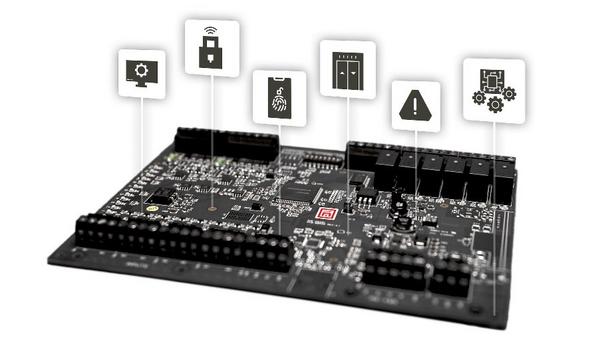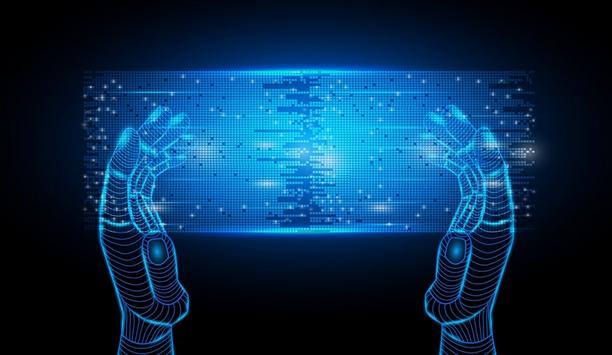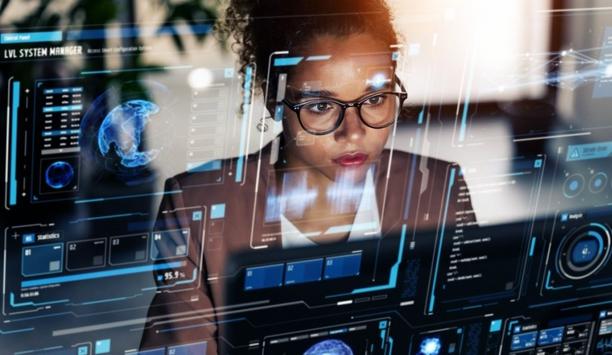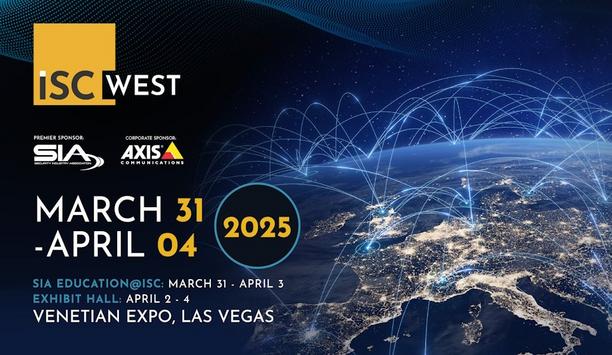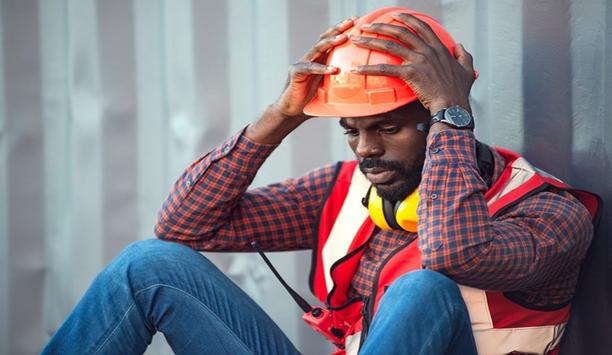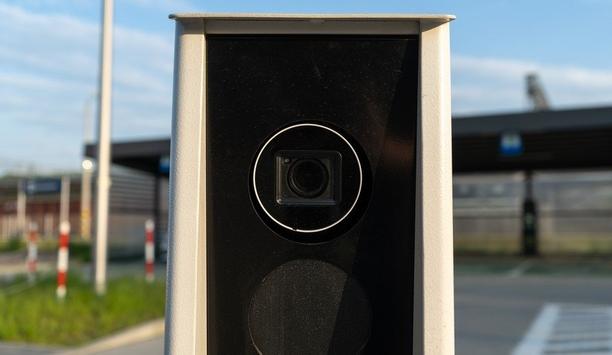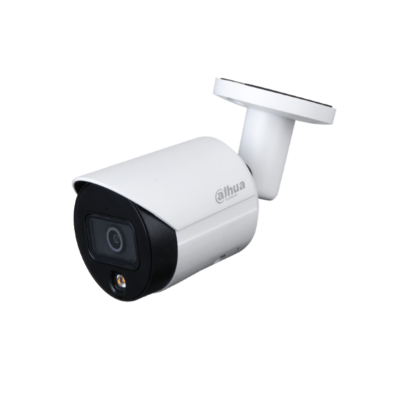Network monitoring
Audio Central Alarm, a client of DICE Corporation, has become the first alarm company in the industry to implement full nationwide branded call display. This groundbreaking service ensures that both service and sales calls from Audio Central now display the company’s logo and identity to recipients across the country—including calls from its central station partner, CSA Monitoring, based in Lansing, Michigan. Branded calling technology Historically, the alarm industry has str...
In a world of nonstop cyberattacks, Rubrik announced its newest upcoming solution, Identity Resilience, designed to secure the entire identity landscape alongside data. Identity Resilience aims to protect the most common entry points for attackers – human and non-human identities (NHIs) – to help organisations maintain operations with minimal downtime. Rubrik’s solution Rubrik’s solution is designed to secure this weak infrastructure that powers virtually Identi...
Global cybersecurity provider Hornetsecurity has partnered with Amazon to provide Amazon Simple Email Service (SES) Mail Manager customers with its Vade Advanced Email Security Add-On. Utilising AI technologies, this add-on allows customers of Amazon Mail Manager to scan and protect inbound and outbound email traffic. Amazon SES for email contacts Hornetsecurity's Vade Advanced Email Security Add-On for Amazon SES Mail Manager offers automated, real-time protection against spam, mal...
Custom Intelligent Security specialises in risk analysis, system design, installation, and maintenance of unified high-security solutions. Their extensive portfolio includes Government, commercial, and enterprise-level clients who demand scalable, secure, and robust security solutions. Next-generation security solutions barox Kommunikation is delighted to announce its partnership with Custom Intelligent Security barox Kommunikation is delighted to announce its partnership with Custom Intelli...
The Physical Security Interoperability Alliance (PSIA) hosted a well-attended cocktail reception and live demonstration during ISC West 2025 to unveil its latest advancement: the PKOC 3.0 specification, an exciting solution for secure, open credentialing in physical access control systems. Jason Ouellette, Chairman of the PSIA and Corporate VP of Innovation and Technical Partnerships at ELATEC, led the presentation. He shared an overview of PKOC’s progre...
Hexagon AB announced an agreement to acquire the Unified Communications Radio Suite (UCRS) software assets of CONET Communications GmbH (CCOM), part of CONET Group, to complement its public safety platform. UCRS is a high-performance communication solution for control centres capable of integrating diverse channels such as Private Branch Exchange (PBX) and mobile phone networks, digital radio, business information systems, public address systems, video surveillance (CCTV), video conferencing, a...
News
Colt Technology Services expanded its product portfolio with the launch of a new Managed Local Area Network (LAN) solution, available now across Colt’s 40+ countries. Ideal for businesses looking for enhanced performance, security, and cost efficiency benefits of a Local Area Network without the complexity and expense of managing it themselves, Colt’s new Managed LAN solution combines powerful digital infrastructure with an effortless service experience. Real-time data sharing Organisations are increasingly using Local Area Networks for fast, efficient and secure real-time data Organisations are increasingly selecting Local Area Networks for fast, efficient and secure real-time data sharing between devices within office buildings, local government or manufacturing sites, hospitals, retail stores and production facilities. This comes as more businesses explore AI-generating and processing higher volumes of data traffic and seek new ways to protect their organisations from sophisticated security threats. Colt’s Managed LAN solution Colt’s Managed LAN solution can quickly, easily and securely connect to a company’s cloud or on-premise network environment via networking services such as Colt’s SD WAN (Software Defined Wide Area Network) solution, providing businesses with a high-performing, secure, interconnected digital infrastructure – particularly valuable for organisations streamlining real estate, integrating newly-acquired sites through M&A or expanding into new premises as they grow organically. Benefits from Colt’s Managed LAN Businesses choosing Colt’s Managed LAN benefit from: Proactive network monitoring by an expert team using best-in-class software platforms, ensuring high performance and reliability without the hassle or investment of managing this directly Improved data security and network security, with Colt’s robust security standards, tools, and practices, including Colt’s Corporate Binding Rules Fast delivery times Better resource allocation, as IT teams are freed from day-to-day network management to focus on delivering business transformation goals Transparent and reduced operating costs and improved power consumption, as businesses only pay for and use power for the services they need Futureproofed technology as Colt invests in the latest energy-saving network technology trends, so their network is current, efficient, and supports their sustainability goals The peace-of-mind that comes from being a part of Colt’s industry-pioneering, proactive, and supportive customer experience New managed LAN service Tyler Hemmen, VP – Enterprise products and solutions, Colt Technology Services, said, "Organisations are reimagining their workspaces to meet changing consumer and employee needs. Connecting these spaces with powerful, secure digital infrastructure is critical, but it’s easy for businesses to lose their way as they try to link this intricate maze of different networks across different sites." Tyler Hemmen adds, "Our new managed LAN service removes this effort and complexity, delivering flexible, secure, optimised local area networks which can seamlessly interconnect to build intelligent, AI-ready architecture."
Digital Watchdog (DW), the industry pioneer in digital recorders, surveillance cameras, system peripherals and related management software, announces the strategic technology collaboration with Allied Telesis, a pioneer in connectivity solutions and intelligent network tools. Building on our commitment to innovation, DW Spectrum now works with StreamConnect for DW Spectrum by Allied Telesis, a dedicated plugin for DW Spectrum IPVMS. This integration enhances network visibility, simplifies device management, and ensures a smarter and more efficient surveillance solution. Integration with Allied Telesis StreamConnect provides a unified, efficient, and scalable key for monitoring security infrastructure StreamConnect is a family of API-based plugins designed to simplify network management and enhance visibility through Video Management Systems (VMS). By seamlessly integrating with various platforms, StreamConnect provides a unified, efficient, and scalable solution for monitoring and strengthening security infrastructure. "Our integration with Allied Telesis strengthens our commitment to delivering advanced surveillance solutions that combine high-performance video capabilities with robust network security," says Patrick Kelly, Senior Director of Strategy at DW. "This collaboration enables us to address modern organisations' increasingly complex security requirements, providing scalable and reliable tools to protect critical assets." Digital Watchdog's advanced surveillance technology Rahul Gupta, CTO of Allied Telesis, conveyed his thoughts on the partnership, stating, "Partnering with Digital Watchdog allows us to bring together our combined expertise to enhance surveillance solutions. By integrating our secure networking capabilities with Digital Watchdog's advanced surveillance technology, we are delivering reliable, scalable, and flexible physical security solutions for our customers." Join them at ISC West 2025. Visit Allied Telesis at Booth #33050 throughout the event and catch them at the Digital Watchdog Booth #10073 on April 2 and April 3 from 11:00 – 11:30 AM.
dormakaba Access Solutions Ltd. has signed an agreement on 3 April 2025 to form a joint venture with Guangdong Kinlong Precision Products Co., Ltd. A subsidiary of Guangdong Kinlong Hardware Products Co., Ltd. Kinlong is the pioneer Chinese construction and architectural hardware company. Through this joint venture, dormakaba enhances its go-to-market in the strongly growing hospitality vertical. Market expansion With the joint venture, dormakaba and Kinlong combine their strengths to enhance their positioning Founded in 2003, Kinlong is based in Guangdong, China. The stock-listed company is the heading public company in the construction hardware industry in China and employs around 16’000 people. With the joint venture, dormakaba and Kinlong combine their strengths to enhance their positioning and expand customer access in the local hospitality market using the brand “Biosure”. The local Chinese hotel segment is expected to grow by double digits over the coming years. The proven product expertise of dormakaba in the hotel lock segment, combined with Kinlong's extensive sales network, experience in the local market, and comprehensive hospitality solutions offering, will drive the joint venture's success. Strengthening presence Till Reuter, CEO dormakaba, says: “We are delighted to partner with Kinlong in this joint venture. The collaboration aligns perfectly with our local-for-local strategy for China, driving further growth through an extended go-to-market and reinforcing our leadership in the local hospitality market, which remains one of our focus verticals.”
Artificial Intelligence Technology Solutions, Inc., announced that its wholly owned subsidiary Robotic Assistance Devices, Inc., (RAD), has received two major awards at the 2025 Security Industry Association (SIA) New Products and Solutions (NPS) Awards. SARA™, RAD’s AI-powered incident response platform, earned the prestigious Judges’ Choice Award and was also selected as the winner in the Threat Detection and Response Solutions category. Both honours were presented on the ISC West show floor during an April 2 ceremony. SARA SIA NPS judges “We are tremendously honoured to have SARA recognised by the SIA NPS judges with both the Judges’ Choice Award and category win,” said Steve Reinharz, CEO/CTO of AITX and RAD. “These awards are somewhat our industry’s equivalent to the Grammys or Oscars, and it feels like we just won Best Album or Best Picture of the year. SARA is designed to meet the increasing demand for intelligent, proactive solutions that elevate security while streamlining operations. These awards will potentially help accelerate industry adoption and AITX growth.” RAD’s ecosystem of devices SARA provides an intelligent layer of automation that now evaluates events and initiates appropriate actions SARA, which stands for Speaking Autonomous Responsive Agent, is RAD’s AI-powered platform designed to manage and escalate security incidents in real time. Developed to work seamlessly across RAD’s ecosystem of devices and monitoring systems, SARA provides an intelligent layer of automation that instantly evaluates events and initiates appropriate actions, including verbal engagement, alert escalation, and live video streaming. Incorporate SARA into Immix’s platform With its ability to respond to a wide range of security triggers, SARA significantly enhances situational awareness and operational efficiency while reducing the need for constant human oversight. This recognition comes just one day after RAD announced its integration agreement with Immix®, a pioneer in central station automation software. The collaboration will incorporate SARA into Immix’s platform, enabling monitoring centres worldwide to benefit from AI-powered response automation. SARA’s revenue and long-term growth The integration is hoped to accelerate SARA’s adoption across retail, residential, and enterprise domains The integration is expected to accelerate SARA’s adoption across commercial, residential, and enterprise environments, reinforcing its position as a transformative force in the remote monitoring industry. “SARA is more than a product, it’s the intelligence engine behind our entire ecosystem,” added Reinharz. “It represents years of focused development and is central to how we’re redefining security. From frontline deterrence to real-time response and reporting, SARA is enabling RAD to deliver measurable value to clients while driving recurring revenue and long-term growth for the Company.” New security technology solutions “SIA congratulates the winners of the 2025 SIA NPS Awards,” said SIA CEO Don Erickson. “Each year, NPS presents the most cutting-edge products available on the market today, and our judges’ dedication, support and thorough consideration are invaluable in maintaining it as the most trusted awards program for launching new security technology solutions.” Amazing new products and solutions “This year’s SIA NPS program has had another fantastic year with amazing new products and solutions presented to our judging panels,” said Christine Bergeron, chair of the SIA NPS Awards Committee and senior director of global physical security technology at Visa. “Thank you to our expert judges and committee members for your dedication to the program and lending your expertise and valuable time to contribute to a successful 2025 SIA NPS program.” Renowned global platform SIA NPS has been the security industry’s premier product awards program “The SIA NPS Awards are a renowned global platform for highlighting new offerings each year, and earning recognition is an impressive accomplishment,” said Elisa Mula, vice chair of the SIA NPS Awards Committee and founder and protection management specialist at EM Designs. “SIA applauds this year’s winners, who impressed our judges after an extensive process of tech demonstrations and panel-driven judging.” Security and guarding services Since its inception in 1979, SIA NPS has been the security industry’s premier product awards program. New products are reviewed by a panel of judges with extensive industry experience, and in 2025, following significant deliberations, the 38 judges presented awards for technologies covering 33 product and service categories. AITX, through its subsidiary, Robotic Assistance Devices, Inc. (RAD), is redefining the nearly $50 billion (US) security and guarding services industry through its broad lineup of innovative, AI-driven Solutions-as-a-Service business model. RAD mobile robotic solutions All RAD technologies, AI-based analytics and software platforms are developed in-house RAD solutions are specifically designed to provide cost savings to businesses of between 35%-80% when compared to the industry’s existing and costly manned security guarding and monitoring model. RAD delivers these tremendous cost savings via a suite of stationary and mobile robotic solutions that complement, and at times, directly replace the need for human personnel in environments better suited for machines. All RAD technologies, AI-based analytics and software platforms are developed in-house. RAD new business RAD has a prospective sales pipeline of over 35 Fortune 500 companies and numerous other client opportunities. RAD expects to continue to attract new business as it converts its existing sales opportunities into deployed clients, generating a recurring revenue stream. Each Fortune 500 client has the potential of making numerous reorders over time.
Mercury Security, the pioneer in open architecture access control hardware, is launching a new addition to its industry-defining controller platform—the Mercury embedded application environment, an open platform that enables technology partners and OEMs to develop and deploy custom applications directly on Mercury MP Controllers. “We have a lot of exciting things happening at Mercury,” said Steve Lucas, vice president of sales at Mercury Security. “We are excited to show customers the Mercury embedded application environment running on Mercury MP Intelligent Controllers, along with a range of new solutions targeting the platform. We’re giving our partners the ability to develop directly on the controller, unlocking new levels of system intelligence at the edge.” Traditional access controllers Unlike traditional access controllers that rely on server-based logic and are limited in upstream system connections, this platform brings real-time logic processing to the edge—reducing latency, increasing availability and enhancing system redundancy. By shifting intelligence closer to the door, the platform improves system responsiveness, minimises network dependency and enables advanced operational features. It also simplifies interoperability, seamlessly integrating controllers, IoT devices, elevators, readers, locks and more. Access control and IoT ecosystem Mercury embedded application environment delivers unmatched flexibility For access control and IoT ecosystem stakeholders who need a secure, scalable and customisable platform, the Mercury embedded application environment delivers unmatched flexibility—supporting third-party app integration and enabling custom business logic to run directly on the controller. Instead of just linking a reader to a management system for access decisions, Mercury controllers act as a nexus, integrating multiple systems and devices for broader functionality and stronger performance. Intelligent security systems “The access control industry is shifting toward more decentralised, intelligent security systems,” said Daniel Gundlach, vice president, head of Physical Access Control Solutions business unit in North America at HID. “Our embedded application environment gives our partners the tools to build smarter, more adaptable solutions that align with today’s challenges and tomorrow’s opportunities.” Key launch partners and apps Mercury is showcasing the broad capabilities of its embedded application environment in collaboration with key launch partners and their certified apps: ASSA ABLOY HES KS210 OSDP Access Control Server Cabinet Lock: With the Mercury KS210 device app, OEMs can now quickly & easily add support for up to 32 KS210 OSDP server cabinet locks without the need to build custom integrations. HID pivCLASS: Enables pivCLASS support on Mercury MP Intelligent Controllers, adding PKI-based authentication at the door to meet security standards required in government facilities and other regulated industries. SecuriThings: This system-class app simplifies security audits by discovering devices on the network and generating detailed reports on their status, including firmware versions, host connectivity and other key security metrics. Viakoo: This SaaS application maintains system health across CPS environments, such as physical security. System reliability is ensured with real-time monitoring, vulnerability identification, lifecycle data, and other critical details. Viakoo takes action to remediate vulnerabilities with firmware updates, password rotations, and certificate management. New standard in access control Mercury MP Controllers quickly set a new standard in access control, offering unprecedented flexibility Launched in June 2024, Mercury MP Controllers quickly set a new standard in access control, offering unprecedented flexibility. These controllers are the foundation for the Mercury embedded application environment, enabling software providers and integrators to seamlessly combine access control technologies, elevator control, building automation, IoT applications and third-party solutions into a unified, centralised infrastructure. This flexible approach eliminates vendor lock-in and provides the freedom to choose the right solution for specific customer requirements while future-proofing investments. OEMs and integrators Mercury Security, an HID company, has pioneered flexible hardware solutions that empower OEMs and integrators to create best-in-class systems for over 30 years. Mercury MP Controllers support a wide range of consistent standards, including OSDP, MQTT and TLS, ensuring interoperability across access control, building automation and IoT applications. The Mercury embedded application environment is available for developers now.
The Board of Directors of Trane Technologies plc, a global climate innovator, declared a quarterly dividend of $0.94 per ordinary share, or $3.76 per share annualised. The dividend is payable on June 30, 2025, to shareholders of record as of June 6, 2025. Trane Technologies has paid consecutive quarterly cash dividends on its common shares since 1919 and annual dividends since 1910.


Expert commentary
From where I sit in talking to security pioneers every day, the traditional Global Security Operations Centre (GSOC) stands at a critical inflection point. Security teams are up against challenges in staffing, operational efficiency, and more threat complexity, which means “thinking outside the box” is becoming critical. The use of artificial intelligence (AI) is emerging as more than a buzzword in these situations; it’s becoming a game-changing force multiplier in security operations. Reaching a breaking point Today's GSOCs face a perfect storm of operational challenges. Security operators, typically earning between $20-40 per hour, require extensive training periods lasting weeks or months as a result of the numerous applications they’re tasked with using. Yet the industry grapples with insane turnover rates of 100-% to 300% annually, creating a costly cycle of continuous recruitment and training. Meanwhile, operators are drowning in video feeds and alarms, leading to fatigue, missed incidents, and delayed response times. Practical applications for AI The reality of many GSOCs, however, is a disjointed mess of multiple applications The GSOC is the centre of an organization’s security and in a perfect world, all of the data related to safety across multiple facilities flows through there, giving operators a clear picture of what’s going on at any given time. The reality of many GSOCs, however, is a disjointed mess of multiple applications. Think about all the platforms needed to respond to a single incident – access control alarm, video to verify, standard operating procedures (SOPs) stored on a shared drive, radios to get a hold of a guard to dispatch, finding a list of emergency numbers and corresponding it to where the incident is happening, and manually logging the results. Steps into a single platform Not only is there a case for unifying all of these steps into a single platform that pulls in data from various sources, but layering response with AI-enabled technology to achieve the following: Real-time video analysis and threat detection. AI-enabled systems are revolutionising surveillance operations by simultaneously monitoring multiple video feeds, detecting and classifying objects, people, and behaviours in real-time. The technology excels at identifying suspicious activities such as loitering, abandoned objects, or unauthorised access attempts, automatically alerting operators to potential threats – or even identifying false alarms that can take human operators away from the work they’re doing – all while maintaining vigilance across numerous camera feeds. Intelligent alarm management. One of AI's most immediate impacts is in addressing the chronic problem of false alarms. By analysing multiple data points simultaneously, AI technology can intelligently filter and verify alerts, dramatically reducing false positives that traditionally consume valuable operator time. An AI GSOC operator, for example, can assess an incoming alarm and either identify it as a real threat (then escalate to its human supervisors) or use SOPs to determine that the alarm is false, providing feedback and reasoning that’s collected and assessed. This intelligent triage ensures security teams focus on genuine threats rather than chasing false alarms, significantly improving response efficiency. Automated incident response. When security incidents occur, AI systems can instantly gather relevant data from multiple sources – including video feeds, access control logs, and sensor data – to generate preliminary incident reports and initiate appropriate response protocols. This automation ensures consistent application of security procedures while maintaining detailed documentation for compliance and analysis purposes. Predictive analytics and pattern recognition. By analysing historical data, AI systems can identify patterns that might indicate emerging security risks before they materialise. This includes detecting unusual access patterns, anomalies in foot traffic, or behavioural patterns that suggest potential future security threats, enabling proactive rather than reactive security measures. The benefits to the business While AI can be used in so many ways to reduce false alarms, create more efficiencies, and help GSOC operators elevate their roles to be more strategic, there is still a stigma associated with its use. However, a lot of the conversations around this kind of investment can be elevated to reflect positively on the business, which can help achieve more buy-in from leadership. Here are some of the ways: Operational improvements: Dramatic reduction in false alarm rates through intelligent verification systems that analyse multiple data points simultaneously Response times cut significantly through automated triage and threat assessment protocols Standardised and consistent application of security protocols across all shifts and incidents More efficient resource allocation through AI-driven staffing recommendations based on historical patterns Expanded security coverage without proportional staffing increases, enabling monitoring of multiple locations simultaneously Enhanced incident documentation through automated report generation and data collection Improved situational awareness through real-time correlation of multiple data sources Reduced training time for new operators through AI-assisted guidance systems Better compliance management through automated protocol enforcement and documentation Business impact: Significant cost savings through reduced false alarm response and more efficient staffing Decreased liability exposure through comprehensive incident documentation and consistent protocol application Enhanced regulatory compliance through automated record-keeping and standardised procedures Improved risk management through predictive analytics and early warning capabilities Better return on investment for security technology through integrated AI-driven optimization Increased scalability of security operations without proportional cost increases More robust business continuity through improved threat detection and response Enhanced protection of critical assets through constant AI monitoring Personnel impact: Reduced operator burnout through automation of routine and repetitive tasks Enhanced job satisfaction as operators focus on strategic decision-making rather than routine monitoring Improved work-life balance through more efficient resource allocation New career development opportunities in AI-enabled security operations Better retention rates through reduced stress and increased job engagement Enhanced skill development as operators learn to work with advanced technology Improved team collaboration through AI-assisted information sharing More effective decision-making support through AI-driven insights Greater operator confidence through AI-backed verification of security events AI and the road ahead Integration of AI into the GSOC is about more than simply technological advancement While security historically hasn’t changed as quickly as its cyber counterparts, its evolution is imminent. Integration of AI into the GSOC is about more than simply technological advancement; it’s a seismic shift in how organisations approach security operations. The future of this is in the partnership between human expertise and AI capabilities, where technology handles routine monitoring and initial threat assessment, allowing security personnel to focus on complex decision-making and strategic security initiatives. Transformation of security operations For security pioneers looking to implement AI in their GSOCs, success lies in thoughtful integration that considers both technical requirements and human factors. By carefully balancing automation with human oversight, organisations can create more effective, efficient, and responsive security operations that deliver tangible value to the enterprise. The transformation of security operations through AI isn't just about doing more with less – it's about doing better with what we have. As threats become more sophisticated and security demands continue to grow, AI-enabled GSOCs will be better positioned to meet these challenges while delivering enhanced protection for people, assets, and operations.
In today’s world, almost any electronic security system holds the potential to become a gateway for cybercriminals. With physical security and cybersecurity increasingly entwined, security professionals aren’t doing their job unless they take all possible precautions to lock down unauthorised access to camera systems, access control platforms, intercoms, and other network-based security devices and solutions. Let’s explore the many steps companies should take throughout their security technologies’ lifecycle – from choosing a vendor all the way through device decommissioning – to avoid making the common mistakes that leave systems, and the networks they reside on, vulnerable to attack and sabotage. Prepurchase phase: Laying the groundwork for cybersecurity 1. Conduct a Vendor Risk Assessment IT departments often rely on the same Vendor Risk Assessment criteria they use for evaluating IT equipment manufacturers when considering the suitability of physical security vendors. While commonalities exist between how to assess these disparate solutions, there are also differences that require distinct scrutiny. For example, device endpoints within physical security systems run on custom Linux Kernels and therefore do not utilise standard Linux distributions like Red Hat, Ubuntu, or Debian. IT divisions often rely on the same Vendor Risk Assessment criteria they use for evaluating IT kit A comprehensive evaluation should examine how each security solutions manufacturer handles its software development life cycles. Ideally, vendors should adhere to a recognised framework when developing both their platform management and device-specific software. In 2021, Executive Order 14028 made it a bit easier for companies to evaluate vendors by providing guidelines for evaluating software security, the practices of the software developer, and methods to demonstrate conformance with secure practices, specifically referencing the NIST SP 800-218 Secure Software Development Framework. In short, a good vendor should have documentation that explains everything it’s doing to address cybersecurity from development, through releases and ongoing maintenance. 2. Obtain Software Update Schedules The frequency with which manufacturers update their software varies. Each company is different. If you’re their customer, it shouldn't matter whether the vendor schedules updates every six months, three months, or more often than that. What does matter is that you know what to expect and have a plan for how to deal with that reality. For example, if updates only occur every six months, under what conditions are patches released to address vulnerabilities that emerge between updates? Customers must understand how often they'll be updating the software on their devices and ensure they have the resources to make it happen. Make sure stakeholders agree, upfront, who will be performing the software updates. Will it be the integrator who installed the system, the physical security system staff, the IT team, or the end user? Keeping an entire system current is a huge challenge, but a non-negotiable responsibility. Manufacturers who don't issue frequent releases and patches put the onus on customers to handle mitigation efforts on their own. In these instances, IT departments must be prepared to employ network segmentation, firewalls, security whitelists/blacklists, and other methods to protect their systems until a patch is released. If a company's security team has typically updated firmware only when something breaks, these additional responsibilities most likely require greater collaboration with IT departments and a shift in how security systems are managed. 3. Know the Warranty Terms and Duration of Software Support Organisations should understand the warranty policies for the devices they purchase Organisations should understand the warranty policies for the devices they purchase. Even more important is knowing when a device's software support will expire. Software support should extend well beyond hardware coverage. For example, if a camera has a five-year hardware warranty, customers should reasonably expect an additional five years of software support. When that period ends, companies must plan on replacing the device – even if it still works well. Without software updates, the device lacks vulnerability support and becomes too risky to remain on the network. Manufacturers should be transparent about their warranty and software support policies, helping organisations plan for device replacements that align with cybersecurity needs. 4. Request a Software Bill of Materials (SBOM) During the pre-discovery process, customers should request a Software Bill of Materials (SBOM) that provides a detailed inventory of the software running on each device, including open-source components. By revealing what software is "under the hood," the SBOM allows IT departments to be vigilant in protecting the company's systems from exposed vulnerabilities. For example, a customer should understand how Transport Layer Security (TLS) is being handled to secure a security solution's web server if it’s an open-source component like OpenSSL. 5. Assess Vulnerability Disclosure Practices CNA manufacturers represent the gold standard in cybersecurity practices Understanding how a manufacturer handles vulnerabilities is essential. Ideally, they should be a Certified Naming Authority (CAN) and report common vulnerabilities and exposures (CVEs) to national vulnerability databases such as NIST and MITRE. Doing so automatically includes any disclosed vulnerabilities associated with their devices in vulnerability scanners' databases. CNA manufacturers represent the gold standard in cybersecurity practices, but most security manufacturers do not reach this level. At a minimum, the vendors you choose to work with should have an email notification system in place to alert customers to new vulnerabilities. Remember – email notifications are only as reliable as the employees managing them, so investigate whether the manufacturer has a strong track record of keeping up with such communications. Ask to speak with customer references who have been using the solution for an extended period to ensure the vendor is diligent in its communications. Configuration phase: Ensuring a secure setup 1. Use Hardening Guides Once a device is purchased, configuring it securely is the next critical step. Manufacturers should publish hardening guides that detail the security controls available for their products and recommended practices for implementation. Between the features offered by the vendor and your company's own cybersecurity policies, make sure all possible encryption options are activated. Using HTTPS is vital for ensuring secure communication with devices. Many physical security devices default to HTTP to accommodate customer-specific network topologies and certificate management. Failing to implement HTTPS can leave sensitive metadata unencrypted and vulnerable to interception. 2. Consider Advanced Encryption Protocols Protocols are necessary to protect video data in transit from cameras to the VMS Some solutions offer built-in encryption protocols, like MACsec, which makes it impossible for data to be compromised as it is transmitted over the network. HTTPS is still necessary to secure the connection to the devices’ webservice, but while customers set up and configure their devices, MACsec will keep network data safe. Additionally, if you want to encrypt video streams, consider protocols such as Secure Real-Time Transport Protocol (SRTP), which secures the transmission of audio and video data over the Internet, or tunnelling methods like Secure Socket Tunnelling Protocol (SSTP), which encapsulate data packets for safe transmission between two points, even if the network is insecure. Such protocols are necessary to protect video data in transit from cameras to the Video Management System (VMS). Encryption should also extend to the VMS hard drive where video is stored. There are different methodologies to do that, but ultimately the goal is to encrypt data in transit and in storage. 3. Implement Remote Syslog In the case of a breach, each device maintains a set of logs that are useful for forensic investigations. However, if a device gets hacked, its log may not be accessible. Best practices dictate that companies should set up a remote Syslog server that maintains a copy of all device logs within a central repository. In addition to providing redundant data for investigations, a Syslog offers IT systems an efficient way to look for anomalies. Cybersecurity teams will receive immediate notification for events like unsuccessful login attempts so they can quickly figure out what's happening. Who is trying to log in? Why on that particular device? 4. Practice Healthy Password Hygiene Ideally, organisations should move towards using Active Directory or Single Sign-On (SSO) solutions One of the most basic and yet overlooked aspects of cybersecurity is the failure to manage user accounts meticulously. Many organisations use the same username and password for all security devices because it's simply too cumbersome to manage a network of devices in which each requires a separate, unique login. It's assumed that the system's primary administrators are the only ones who know the universal password. However, the system becomes vulnerable if anyone within this select group leaves the company and the password isn't changed or deleted right away. Ideally, organisations should move towards using Active Directory or Single Sign-On (SSO) solutions. This approach ensures that employees throughout a company are each assigned a unique login credential that they use for any systems they use throughout the organisation. When they leave, their passwords and access are universally terminated along with their accounts. If SSO is not an option, regular password changes and prompt account deactivation are critical. Decommissioning phase: Securely retiring devices At some point, physical security devices will reach the end of their useful life. When that time comes, companies must take care in how they dispose of their devices. A good vendor will provide guidance on how to clear memory chipsets and restore factory defaults. Improper decommissioning can lead to severe risks. For example, if an improperly decommissioned device is sold on the secondary market or retrieved from a dumpster, an attacker could gain access to sensitive network configurations and use this information for malicious purposes. Conclusion Deploying physical security solutions involves more than just securing buildings and assets; it also requires robust measures to protect against cybersecurity threats. From assessing vendors and understanding update policies to configuring devices securely and managing decommissioning processes, each step presents potential pitfalls that, if overlooked, could expose organisations to significant risks. By incorporating the techniques discussed into their deployment protocols, organisations can ensure their physical security solutions provide comprehensive physical and digital protection.
Rapid technological advancement, artificial intelligence (AI) and machine learning (ML) are revolutionising traditional on-premises video security systems. These next-level tools are not just enhancing video data capabilities; they're transforming how businesses approach security, operational efficiency, and information analysis. Video analytics have been a part of security systems for many years, but the arrival of deep learning in 2009 marked a turning point. By training neural networks, basic analytics tasks like motion detection, object detection, and tracking objects within scenes have become commonplace. This leap forward has paved the way for more sophisticated AI and ML applications in video security. Proactive security measures AI-powered systems can perform complex tasks such as pose estimation and anomaly detection Today's AI-powered systems can perform complex tasks such as pose estimation, anomaly detection, and behaviour analysis. These capabilities extend far beyond simple, passive monitoring, offering organisations rich insights and proactive security measures. For instance, analytics can now determine whether people are engaged in hostile or benign interactions, recognise unusual events that may signal safety hazards, and even predict potential security breaches before they occur — all based on analysing massive amounts of data that humans alone could never process. Enhancing on-premises infrastructure While the power of AI and ML in video security is clear, integrating these technologies into existing on-premises systems presents both opportunities and challenges. One of the primary considerations is the increased demand for processing power and storage capacity. As solution technology expands, hardware requirements will increase. This reality necessitates a strategic approach to system design and implementation. Organisations must carefully evaluate their current infrastructure and plan for future needs to ensure their on-premises systems can handle the computational demands of AI and ML tools. However, the benefits often outweigh the challenges. AI-enhanced on-premises systems offer several advantages: Real-time processing: On-premises AI can analyse video feeds in real time, allowing for immediate response to security threats. Data privacy: Keeping data processing on-site can help organisations meet strict data privacy regulations and protect sensitive information. Customisation: On-premises systems allow for greater customisation of AI models to meet specific security needs. Reduced latency: Processing data locally eliminates the need for constant cloud communication, reducing latency in critical security applications. The role of open platform video technology To fully leverage AI and ML capabilities in on-premises video security systems, open-platform video management software (VMS) plays a crucial role. An open platform VMS allows for seamless integration of various AI and ML tools, cameras, and other security devices, creating a highly flexible and scalable system. An open VMS can integrate thousands of cameras and sensors, allowing for centralised management and analysis of vast amounts of data. This approach enables security teams to quickly adapt to new threats and implement new and unplanned AI and ML solutions as they become available. Video system management The hybrid approach to video system management combines on-premises infrastructure with cloud services It's important to note that many organisations choose to deploy a hybrid approach to video system management that combines on-premises infrastructure with cloud services. This strategy can offer the best of both worlds: the control and low latency of on-premises systems with the scalability and advanced capabilities of cloud-based AI and ML tools. For example, some cities have implemented hybrid data storage models, hosting critical real-time data on local servers while leveraging cloud services for long-term storage and advanced analytics. This approach allows for efficient management of large amounts of high-resolution video data while reducing costs associated with on-premises storage expansion. Practical applications and benefits The integration of AI and ML into on-premises video security systems is transforming security practices across industries, offering benefits that extend beyond traditional surveillance. These advanced technologies enhance security measures while providing valuable insights for operational efficiency and strategic decision-making. By analysing video data in real time, AI and ML-powered systems can detect patterns and automate responses in unprecedented ways. Here are some key examples of sector-specific benefits: Retail: AI-powered analytics can optimise product placement, track shopping patterns, and enhance loss prevention efforts. Education: K-12 schools can use advanced video analysis to address issues like vaping and bullying, monitor traffic, ensure that proper procedures are followed, and provide enhanced safety and security. Manufacturing: AI can streamline quality control processes, detect safety violations, and optimise production line efficiency. Healthcare: Intelligent video systems can monitor patient safety, manage access control, and even assist in documenting and verifying that procedures and protocols are followed appropriately. Transportation: AI-enhanced video systems can improve traffic management, enhance security in transit hubs, and assist in incident response. Challenges and considerations Ensuring access to robust, diverse, and representative data sets is essential for training AI models effectively AI and ML hold great promise for on-premises video security, but organisations may encounter challenges during implementation. The considerable upfront costs could discourage smaller businesses or those with tight budgets. Nevertheless, this should be viewed as a long-term investment with significant returns in enhanced security and operational efficiency. Implementing AI-powered systems in video security can be complex, often requiring specialised skills, potentially creating a gap within existing IT or security teams. To bridge this skills gap, organisations may need to invest in training or partner with external experts to address this challenge. Additionally, the quality of data is crucial for effective AI and ML implementation; poor or insufficient data can result in inaccurate analyses and unreliable results. Ensuring access to robust, diverse, and representative data sets is essential for training AI models effectively. Benefits of integrating AI and ML Ethical considerations surrounding privacy, consent, and potential algorithmic bias are also critical. Organisations must strike a balance between enhancing security and safeguarding individual privacy rights to maintain public trust in these technologies. Despite these challenges, the benefits of integrating AI and ML into on-premises video security systems often outweigh the difficulties. Careful planning, resource investment, and a strong focus on ethical and regulatory compliance can lead to more effective, efficient, and intelligent security solutions. Future outlook Edge computing capabilities will enable sophisticated AI processing directly on cameras The future of AI and ML in on-premises video security promises significant advancements that will address current limitations and unlock new possibilities. Edge computing capabilities will enable sophisticated AI processing directly on cameras and other security devices, reducing strain on central servers and potentially lowering hardware requirements. This, combined with more efficient AI algorithms, will democratise access to advanced AI and ML capabilities for organisations of all sizes. AI-powered analytics Predictive analytics will become a cornerstone of future video security systems, marking a shift from reactive to proactive security measures. As AI models become more sophisticated, their ability to anticipate and prevent security incidents will improve dramatically, revolutionising risk management and incident response. The integration between video security and other business systems will deepen, with AI-powered analytics providing insights beyond security into business operations and strategic decision-making. Data for training AI models Explainable AI will become more overall, which is vital for building trust in automated systems Automation of security processes will reach new heights, freeing human operators to focus on high-level decision-making and complex situations. To support this evolution, we'll likely see increased use of synthetic data for training AI models, addressing privacy concerns, and improving model robustness. Explainable AI will become more prevalent, which is crucial for building trust in automated systems and meeting regulatory requirements. For security professionals, embracing these technologies is no longer optional but necessary to remain competitive and provide the best possible service to clients. By leveraging open platform VMS and carefully planning system architectures, organisations can create flexible, scalable, and powerful video security solutions that not only protect assets but also drive business value. Enhanced video security systems The key to success will be finding the right balance between on-premises control and cloud-based capabilities while addressing important considerations around privacy, ethics, and regulatory compliance. With thoughtful implementation and ongoing adaptation, AI and ML-enhanced video security systems will continue to play an increasingly central role in safeguarding our businesses, institutions, and communities.
Security beat
As the pioneering security event in the United States, ISC West is truly the global focal point for bringing together professionals across the physical and cybersecurity landscape. The event seeks to showcase innovation in security technology, nurture professional development, and explore the security implications of today’s connected world. Future of security With the growth of cybersecurity programming and the established Cybersecurity & Connected Internet of Things (IoT) pavilion, ISC West is addressing the future of security head-on. “As the lines between the digital and physical worlds blur, collaboration and shared learning among defenders have never been more critical,” says Mary Beth Shaughnessy, Event Vice President at RX USA, who oversees all aspects of the ISC brand. Shaughnessy previews what’s new at ISC West 2025 and shares other insights in our interview. Q: For long-time attendees at ISC West, what will be the biggest surprise at the 2025 show? Shaughnessy: Long-time attendees know to expect top-tier educational content through the SIA Education@ISC West program (produced by the Security Industry Association (SIA)) in addition to cutting-edge security innovations showcased by 700+ exhibitors. New this year is our focus on technology, training, and education around cyber-physical threats. In today’s connected world, physical and cybersecurity defenders must take a unified, holistic approach to protecting their people, assets, and data. ISC West serves as a bridge between those two worlds, helping organisations tackle the complex security landscape. Q: Presenting a high-profile music concert as part of ISC West is a fun value-add for attendees. Describe how this feature has been embraced by longtime attendees, and the plans for 2025. Shaughnessy: We’re thrilled to announce that the legendary Gin Blossoms will headline the ISC West Concert, sponsored by Wavelynx. This tradition began last year and became a celebrated highlight, offering professionals a chance to unwind and connect with colleagues and peers after a productive day on the show floor. When choosing a performer, we focus on acts that resonate across generations, making the experience both entertaining and memorable for our diverse audience. We are excited to continue this fun and exciting event and networking opportunity. Q: In the past, the education program at ISC West has been seen as secondary to the Expo event. How have you sought to increase the profile of the education program, and what new features will attract more attendees in 2025? Shaughnessy: We’ve expanded the SIA Education@ISC programming from three to four days, now beginning two days before the expo hall opens. These dedicated education days ensure professionals can engage in thoughtful discussions and gain actionable insights without overlapping with the Expo. This year, we’re proud to partner with RSA to introduce a new “IT for Security Professionals” track while also offering our core tracks, including AI & Digital Transformation, Critical Infrastructure & Data Protection, Cybersecurity & IT, InfraGard National Members Alliance @ ISC, and Video Surveillance. We will also be welcoming powerful keynote speakers — Rachel Wilson, Director of Cybersecurity, Morgan Stanley Wealth Management; Will Bernhjelm, Vice President of Security, Mall of America; and Kate Maxwell, Chief Technology Officer, Worldwide Defense & Intelligence, Microsoft. Q: What else is “new” at ISC West in 2025? Shaughnessy: Our educational programming has grown significantly — this year’s SIA Education@ISC program is our most extensive yet, offering more than 115 sessions led by over 200 distinguished experts. With broader and deeper topics, the program emphasises the critical convergence of cyber and physical security, providing unparalleled insights for today’s security professionals. We are also significantly ramping up our cybersecurity offerings and expect to have more than 50 exhibitors in our Cybersecurity & Connected IoT pavilion with names such as Entrust and Ontic. Q: Networking is a critical aspect of ISC West. How are show organisers working to increase networking opportunities? Shaughnessy: Networking remains a top priority at ISC West, with countless opportunities to build valuable connections. Professionals can join peers at popular spots like The Bridge, The Cyber Hub, and the Career Zone (sponsored by: TEECOM). These spaces offer the chance to learn from industry experts, explore the challenges and innovations shaping the security workforce, and engage in dynamic discussions with peers. Also, returning by popular demand, the ISC West Concert, proudly sponsored by Wavelynx, delivers a vibrant evening of music and networking in a relaxed atmosphere. Together, these experiences ensure networking at ISC West is both impactful and memorable. Q: What is the biggest challenge for organisers of ISC West (and related events), and how are the organisers seeking to address the challenges? Shaughnessy: As with most events, there is a lot of pressure on organisers to ensure there’s “something for everyone,” add meaningful value, and introduce fresh, exciting features. At ISC West, we work to raise the bar each year by expanding our content with more thought pioneers, showcasing a broader range of innovative technologies, and fostering additional networking opportunities. Achieving top-quality results is no small task — it demands careful planning, collaboration, and a dedication to continuous improvement. This means actively listening to the needs of our attendees and exhibitors, staying ahead of industry trends, and ensuring we provide an experience that informs, inspires, and connects the security community.
Companies at GSX 2023 emphasised new ways that technologies such as artificial intelligence (AI) and the cloud can address long-standing issues in the security market. Among the exhibitors at the event in Dallas were companies seeking creative ways to apply technology, lower costs, and make the world a safer place. Reflecting on the exhibition, here are some additional takeaways. Expanding AI at the edge i-PRO is a company reflecting the continued expansion of edge AI capability in the security market. Today, more than half of the company’s lineup supports AI at the edge so the customer has a wide choice of form factors when seeking to leverage the feature set. AI processing relay, extended warranty i-PRO is increasing their warranty period from 5 to 7 years, which could be a lifetime warranty in some cases I-PRO also has an “AI processing relay” device that accepts non-AI video streams and applies edge analytics. AI has progressed from a high-end technology to a feature available in a variety of cameras at different price points. i-PRO is also increasing its warranty period from 5 to 7 years, which could be a lifetime warranty in some cases depending on a customer’s refresh schedule and lifecycle management. Active Guard, MonitorCast The company’s video management system (Video Insight) is continuing to build new features including “Active Guard,” an integrated metadata sorter. Their access control platform, MonitorCast, is a Mercury-based solution that is tightly integrated with Video Insight. Their embedded recorders now have PoE built in. “We can move at a faster pace to fill out our product line since leaving Panasonic,” says Adam Lowenstein, Director of Product Management. “We can focus our business on adapting to the market.” Emphasis on retail and other verticals Shoplifting is a timely issue, and retail is a vertical market that got a lot of attention at GSX 2023. “We see a lot of retailers who are primarily interested in protecting employee safety, but also assets,” says Brandon Davito, Verkada’s SVP of Product and Operations. “Shrinkage is a CEO-level priority.” “Retailers are getting more engaged with security posture, instead of letting perpetrators walk,” Davito adds. Intrusion detection Verkada has an intrusion product that will notify a central station if there is an alarm On the alarm side, Verkada has an intrusion product that will notify a central station if there is an alarm, and operators can review videos to confirm the alarm. Other capabilities seeking to discourage trespassers include sirens, strobes, and “talkdown” capabilities. International expansion Verkada continues to expand internationally with 16 offices in all, including Sydney, Tokyo, and London. The core value proposition is to enable customers to manage their onsite infrastructure more simply, including new elements such as PTZ cameras, intercoms, and visitor management. Verkada emphasises ease of use, including a mobile application to allow access to be managed across the user base. Forging partnerships “We are committed to the channel and industry, and we continue to build relationships and expand our reach,” says Davito. Among the industry relationships is a new partnership with Convergint, which was hinted at during the show and announced later the same day. They are also expanding their partnerships with Schlage, Allegion, and ASSA ABLOY. Working with other verticals They offer new features for K -12 schools, and a new alarm platform is easier to deploy and manage Verkada has also found success across multiple other verticals, notably healthcare, where they integrate with an electronic medical records system. They offer new features for K-12 schools, and a new alarm platform is easier to deploy and manage. They are integrating wireless locks to secure interior doors in schools, looking to secure the perimeter, and installing guest management systems. Transitioning the mid-market to the cloud Salient is squarely focused on the “mid-market,” a large swath of systems somewhere between small businesses and enterprise-level systems. Pure cloud systems are not as attractive to this market, which has a built-out infrastructure of on-premise systems. Adding a camera to an existing system is easier and less expensive than tying it to the cloud. Benefits of cloud It’s a market that may not be ready for the pure cloud, but there are benefits to be realised from adding a cloud element to existing systems. “We are continuing to augment our premise-based solutions with added cloud capabilities and flexibility,” says Sanjay Challa, Salient’s Chief Product Officer. The feedback Salient hears from their customers is “I want to own my data.” The hybrid cloud approach offers the right mix of control, flexibility, and unit economics. Cloud add-on capabilities We want to provide the flexibility for customers to go full-cloud as it becomes more economically attractive" Cloud add-on capabilities include bringing more intelligence about system operation to the user via the cloud. Over time, Salient expects to sell more cloud-centric offerings based on feedback from integrators and customers. “We want to provide the flexibility for customers to go full-cloud as it becomes more economically attractive over time,” says Challa. Vaidio AI technology Salient seeks to be a transition pioneer to help customers realise the path to the cloud. Their approach is “crawl, walk, run,” and helping customers make the transition at each stage. Salient has added AI to its product offering, incorporating Vaidio AI technology from IronYun into a powerful suite and broad array of on-premise analytics, which are gaining traction. The seamless approach makes it easy for customers to embrace AI analytics, although Salient remains broadly committed to open systems. Addressing ‘soft’ features for integrators AMAG is in the process of enhancing its product line with the next generation of access control panels. However, “product” is just part of the new developments at AMAG. In addition to “hard” features (such as products), the company is looking to improve its “soft” features, too; that is, how they work with the integrator channel. Integrator channel Rebuilding a process to make your organisation more efficient, is relatively easy; it just takes a lot of persistence" “We have the depth of our legacy customer base we can learn from, we just need to close the feedback loop quicker,” says Kyle Gordon, AMAG’s Executive Vice President of Global Sales, Marketing, and commercial Excellence, who acknowledges the value of reinstating face-to-face meetings after COVID. “We are laser-focused on nurturing our integrator channel,” he says. “Developing new features takes time, but rebuilding a process to make your organisation more efficient, that’s relatively easy; it just takes a lot of persistence,” says Gordon. More cohesive internal communication is another useful tool, he says. Disrupting the cloud based on price Wasabi is working to make cloud applications less expensive by offering a “disruptive” price on cloud storage, $6.99 per terabyte per month (80% less than hyperscalers). Contending “hyperscalers” like AWS are charging too much for cloud storage, Wasabi is using its own intellectual property and server equipment co-located in data centres around the world. Wasabi sells “hot cloud storage,” which refers to the fact that they only have one tier of storage and data is always accessible. In contrast, a company such as AWS might charge an “egress fee” for access to data stored in a “colder” tier. Cloud storage “We saw that several video surveillance companies had not yet adopted cloud storage, and we saw an opportunity to make it easy to use,” said Drew Schlussel, Wasabi’s Senior Director of Product Marketing. “We just install a little bit of software that allows them to store data in the cloud and bring it back from the cloud.” Performance, protection (cybersecurity), and price Wasabi works with integrators, resellers, and distributors and also integrates with VMS companies Wasabi works with integrators, resellers, and distributors and also integrates with VMS companies such as Genetec and Milestone. Emphasising performance, protection (cybersecurity), and price, their data centres are certified to SOC 2 and ISO 27001 standards. Faster throughput for weapons detection Xtract One is a young company focusing on weapons detection in a time of accelerated concern about gun issues post-COVID. Founded in Canada and based on technology developed at McMaster University, Xtract One has found a niche in providing weapons detection at stadiums and arenas. These customers already have budgets, and it is easy to shift the money to a newer, faster technology. Madison Square Garden in New York City is among its customers. Cost savings solution Xtract One can increase throughput to 30 to 50 people per entrance per minute (compared to 5 to 6 people per minute when using metal detectors). The solution doesn’t require anyone to empty their pockets and the system alarms on items beyond guns and knives. Using Xtract One allows customers to reduce the number of screening lanes and security staff, providing additional cost savings, all while getting fans through the screening process in half the time. Purpose-built sensors The system uses purpose-built sensors looking for specific characteristics, such as reflective and density properties In addition to stadiums and arenas, Xtract One, formerly Patriot One, is also getting “inbound” interest from schools, hospitals, manufacturers, and other verticals that makeup 50% of their business. “We’re on a rocket ride, mainly because the weapons issues are not going away,” says Peter Evans, CEO and Director at Xtract One. The system uses purpose-built sensors looking for specific characteristics, such as reflective and density properties, all correlated by an AI engine. Providing early warning of violence ZeroEyes is another company focused on weapons detection. Their AI gun detection system works with video images to identify if someone is “brandishing” (carrying) a weapon. In other words, the system does not detect concealed weapons. Identifying someone carrying a weapon provides early warning of a possible violent act. Increased response with AI-enables images Images are identified by AI and sent to a monitoring centre where a human confirms the image before contacting first responders. Knowing the location of a shooter enables staff to lock entry points, move people to safety, and direct first responders. The company was founded to leverage existing camera views to stop mass shootings and gun violence by reducing response times.
A pioneer in the access control sector since 1971, AMAG Technology is looking to the future and the next generation of products that will expand its services to customers. “In our vision, we have advanced approaches that will not only provide our partners with advanced technologies but also ones that are easier to install with tools to expand their services,” says David Sullivan, who was appointed President of the venerable access control company in September 2022. New challenges at AMAG Sullivan brings a new outlook to the AMAG business, a part of Allied Universal, and a new vision to lead the company into the future. We caught up with David Sullivan to discuss his new challenges at AMAG and the journey ahead as the company looks to the future. Q: How does your background inform your approach to leading AMAG? I believe that it helps me to define a vision for AMAG that will be unique and on the leading edge of our industry David Sullivan: With the exception of only a few short years, my career has been in access control. I have experience with several systems and have had the privilege to manage several successful access control companies. As a result, I bring a great deal of experience into my role at AMAG. I believe that it helps me to define a vision for AMAG that will be unique and on the leading edge of our industry. Q: How would you describe AMAG’s journey over the last several years and how do you see the future? Sullivan: Prior presidents of AMAG always shared their leadership vision and direction with senior leaders located in the United Kingdom. This had an impact on the full direction of the business, sometimes limiting its ultimate success. Before I became a part of AMAG, these senior leaders that were located in the UK retired, placing for the first time the full management responsibilities of the president. This has allowed me to integrate the business into a single team, with single objectives, and a single vision. We expect to begin to reveal this new vision in the coming weeks. We are excited about the future of AMAG and believe we will surprise the industry with our new products and approach in the coming months and years. Q: How important is it that a manufacturer provides both hardware and software solutions? How does AMAG’s approach (in general) differentiate it in the market? We can design the complete solution, providing functionality that others may find more difficult to accomplish Sullivan: Regardless of the manufacturer, we all provide hardware and software. An access control solution is not complete without both. Some of us choose to make our panels, and others do not. Those who are dependent on third-party suppliers are restricted to the developments and direction of that company, and while it might be perceived to be an open technology, it still is proprietary to the hardware manufacturer. AMAG has controlled its manufacturing of panels from day one. The result means that we can design the complete solution, providing functionality that others may find more difficult to accomplish. Q: How does the breadth of AMAG’s product suite provide advantages to customers and/or integrators? Sullivan: AMAG’s product portfolio is unique and provides the end user with an end-to-end identity management solution from one company. Our Control Room PSIM, Symmetry CONNECT Identity Management Solution, Symmetry Access Control, and Symmetry GUEST solutions all integrate to provide the user with a broad set of features and capabilities from a single provider. There is no finger-pointing when we come to support your system. We hold full responsibility for making it work and can quickly provide a resolution to any application difficulties the user may be experiencing. Q: How does AMAG address the divide between on-prem and cloud systems? How do you help customers make the transition and/or plan for the future? We are in the early stages of developing our next generation of access control in which we intend to provide on-prem Sullivan: In our current product portfolio, we have three products that are cloud-based. Our mobile credential platform (Symmetry Mobile), our visitor management solution (Symmetry GUEST), and our physical identity and access management solution (Symmetry CONNECT) are all offerings that operate in the cloud. We are in the early stages of developing our next generation of access control in which we intend to provide on-prem, web client, and cloud-based offerings. One of the primary objectives is to ensure that the large installed base of systems that are out there today will be able to migrate not only to our next generation but as well to the cloud if the client so desires. Q: What is AMAG’s approach to mobile credentialing? Sullivan: As an access control provider, adding Symmetry Mobile credentialing to our portfolio just made sense. We want our customers to have a forward-thinking solution with the opportunity to save money not only on the physical badges but the cost of printing and distributing badges. Mobile credentials can be easily issued and revoked remotely, reducing administrative overhead, and eliminating the need for physical inventory management. Organisations can centrally configure what devices are used and the read range for each type of device and operating system, thus providing flexibility. Symmetry Mobile offers a customised questionnaire that controls access and reduces liabilities. Q: What has surprised you the most in your first year or so leading AMAG? Not many companies are blessed with such a broad portfolio that is supported by a resource-rich company Sullivan: I wouldn’t say I was surprised by this as much as happy to see, but I would say that the quality of our people was a pleasant surprise. As well, the AMAG product offering is broad and has some unique elements. When coupled with the depth of the resources that we have in AMAG, I know that we are second to none. Not many companies are blessed with such a broad portfolio that is supported by a resource-rich company that has so many talented people. Q: Please describe your dealer channel, and how you are seeking to expand it. Sullivan: The AMAG products are sophisticated and typically are installed for higher-end applications. With this sophistication comes a need to be well able to install such a solution. We have a strong group of certified and loyal partners who help us to deliver these enterprise solutions. We desire to provide our existing partners with updated and competitive systems to offer to their end users. Q: What is the security industry’s (and/or AMAG’s) biggest challenge in the next five years? We need to find ways to provide both our channel partners and the customers with solutions that are easily integrated Sullivan: I believe that the advancements that we are seeing in technology provide our industry with the opportunity to truly change how security is provided to our collective customers. As we advance these solutions, we will need to do so responsibly and in a way that helps the channel’s abilities. We need to find ways to train our partners to both install and support these more complex solutions. At the same time, we need to find ways to provide both our channel partners and the customers with solutions that are easily integrated, moving away from proprietary closed systems to open and cohesive solutions. This will ensure that the users get the best, and most complete solutions. Q: What does the industry as a whole misunderstand about AMAG -- time to set the record straight! Sullivan: Well, I am not ready to openly share where we are heading. We are in the process of putting together some advanced approaches to how we will do business with our partners. We are focused on providing tools that will enhance their services to their customers, and with products that are leading edge. I can only state that all should keep their eyes on AMAG, because over the next few years, we are going to surprise some people, and more importantly make our loyal partners quite powerful.
Case studies
Comelit-PAC LOGOS video door entry monitors have been installed at the luxury Mercantile residential development in just two weeks from quotation to project completion, thanks to the enhanced security technology. Situated in Ropewalks, a central hub in Liverpool, the Mercantile is a cosmopolitan living environment situated at the heart of the city. Featuring 32 one- and two-bedroom apartments together with a collection of penthouses, the development is suitable for buy-to-live and buy-to-let clients. Ideal features and benefits of smart LOGOs monitors With premier interior specification, security specialist on site Digital Vision North West was introduced to Comelit-PAC via its gold partner distributor Moreton Alarms, with the smart LOGOs monitors proving ideal features and benefits to seamlessly blend with their surroundings. Says John Morley of Legacie Developments: “Every aspect of the Mercantile has been designed to be world-class and completed to an impeccable standard to maintain our impressive portfolio of luxury living environments in key UK cities. We knew of Comelit-PAC for its own reputation for high specification solutions and were happy to be introduced to the LOGOs monitors. All 32 monitors were installed quickly and offer our residents impressive features and benefits.” Power and use of NFC communications New Comelit-PAC LOGOS monitor series offers installers ease of use and enhanced functionality The new Comelit-PAC LOGOS monitor series offers installers ease of use and enhanced functionality. By harnessing the power of NFC communications and the dedicated MyComelit app, the LOGOS Monitor was selected over other brands for its high-quality video capabilities, user-friendly interface, and competitive pricing. Says Mark Lewis, Director of Digital Vision North West: “The streamlined design and efficient integration of the LOGOs monitors made it the ideal choice for this residential development. Its real benefit is the use of NFC communications, where we could programme each monitor quickly and efficiently, ready for resident use. From quoting to works completion is a top effort to offer such advanced smart door entry technology; we’ll definitely be using them more in the future.” Innovation and security excellence Tom McCabe of Comelit-PAC added: “Whilst Comelit-PAC is known for our focus on style and design, the LOGOs monitor demonstrates our commitment to innovation and security excellence." "We continuously strive to enhance our product portfolio and simplify the setup process, enabling more installers to offer smart door entry technology with ease. It’s fantastic to see LOGOs installed at such a prestigious project in Liverpool and to witness how its advanced functionality enhances both security and convenience for modern city living.”
Founded in 2020 by a team of energy professionals in Milan, Sunprime is a fast-growing independent renewable energy producer that develops sustainable photovoltaic plants across Italy. Their focus is mainly commercial and industrial (C&I) segment, ground-mounted systems on industrial land and industrial electricity storage systems. Challenges With global initiatives toward green sustainability and carbon neutrality, the demand for photovoltaic power generation construction is growing rapidly. Sunprime's project pipeline currently consists of several projects, many of which are located in very remote and often unattended areas (e.g., Maleo, Lodi Province), making it vulnerable to thieves that steal valuable cables and panels. Securing the vast area of photovoltaic plants requires a comprehensive surveillance system that can monitor the site at all times. Solution Dahua and Sunprime enabled the project team to come up with an effective design The technical and commercial partnership between Dahua and Sunprime enabled the project team to come up with an effective design, implement cutting-edge technologies and pay great attention to the positioning of the cameras. In order to safeguard one of the client’s solar power plants covering approximately 70,000 m2, more than 1,500 hybrid cameras (thermal cameras + traditional cameras) equipped with AI algorithms were deployed around the area, actively monitoring for potential intrusion 24/7. Advanced AI algorithms These state-of-the-art Dahua products can stably operate even under harsh weather conditions, making them ideal for outdoor applications. They are equipped with advanced AI algorithms capable of generating accurate alarms while filtering out false positives, which makes monitoring more efficient and more convenient for the client. Dahua AirShield wireless alarm system The signals are managed by row of switches and transmitted to high-resolution recorders In addition, through fibre optics, the video steam from the cameras are sent to the technical rooms in the solar park via Dahua’s industrial switches. The signals are then managed by another row of switches and finally transmitted to high-resolution recorders. The Dahua AirShield wireless alarm system was also installed in each technical room in the park, providing another level of protection for the central equipment. What’s more, all the systems of Sunprime’s solar parks are now centralised through local routers thanks to the Dahua DSS management software installed in the surveillance operations centre. Results Sunprime’s solar power plant has witnessed how Dahua’s thermal perimeter protection solution can be utilised to safeguard its property and assets located in remote and secluded areas. In addition to early business communication, Dahua has assisted Sunprime from pre-sale stage to the implementation of the products, with plans and designs based on the actual needs of the customer. The high-quality service offered by Dahua has gained praised from the client. “The implementation of this type of systems was made possible thanks to the support of the Dahua projects department, which assisted us from the pre-sale stage up to the implementation of the products,” says Mr. Michele Vianello, Asset Manager at Sunprime. “I take this opportunity to once again thank them for their support throughout the entire project,” he added. After the successful completion of this project on the first site, Dahua has secured new projects for another 80 sites with approximately 20 thermal imaging cameras for each site, generating a total supply of 1,600 thermal imaging cameras.
Genetec Inc., the global pioneer in enterprise physical security software, announced The City of Edinburgh Council is using Genetec™ Security Centre as the backbone of its Smart City Strategy. The software is transforming public safety, city services and urban planning by allowing the council to manage all smart city technologies from a single interface. New applications and technologies The council’s Smart City Strategy focuses on introducing innovative technologies to manage aids The council’s Smart City Strategy focuses on introducing innovative technologies to manage resources more efficiently and improve public services. A key barrier to this vision was the city's outdated public space security system, which lacked the ability to integrate new applications and technologies. With funding from the European Regional Development Fund (ERDF) and in partnership with North, Edinburgh has launched a state-of-the-art Smart City Operations Centre built on Genetec Security Centre, a unified platform that combines video surveillance, analytics and IoT sensors, through one platform. Open hybrid-cloud architecture “All truly connected Smart Cities start with unified security as success depends on centralising your operations under one platform. Otherwise, every new IoT device deployed will make you data-rich but information poor,” comments Ben Durrant, Account Executive, Genetec Inc. "Our platform differs from conventional alternatives because of its open hybrid-cloud architecture that offers the flexibility and functionality needed to evolve and keep pace with new requirements.” Capabilities beyond physical security The system not only supports day-to-day functions and the control of large-scale events With a unified platform in place, Edinburgh has been able to expand CCTV coverage in public spaces and enable secure data sharing with partners like Police Scotland, the Fire Service, and Transport for Edinburgh. The system not only supports day-to-day operations and the management of large-scale events such as the Edinburgh Fringe, the Royal Military Tattoo, and the Hogmanay celebrations, but it also extends its capabilities beyond physical security. Security Centre ecosystem Andrew Foster, MD, Public Services at North comments: "The Security Centre ecosystem allows us to gather and visualise useful data sets from advanced analytics IoT sensors on how the city is actually being used by residents and visitors." "This enables the council to make more informed decision making on how Edinburgh can become even safer, greener and better maintained." Improved quality of footage The council credits the software with saving hundreds of man hours that were yet spent manually The council credits the software with saving hundreds of man hours that were previously spent manually trawling through surveillance footage. As well as with helping it to more than double the number of viewing requests from Police Scotland that it can positively respond to. The improved quality of footage submitted as evidence is also expected to increase the number of early guilty pleas, reducing the time police officers must spend attending court to give evidence. Smart City strategy “The benefits for Edinburgh residents are massive. Enhanced public safety, improved services, optimised traffic flow, better infrastructure and city planning,” concludes Gavin Brown, Head of Network Management & Enforcement, Edinburgh City Council. “Genetec and North have proved instrumental in helping deliver our Smart City strategy.”
EQUANS were engaged by Alfred Health to deliver an AV upgrade to their Centre for Health Innovation (CHI), where clinical staff and students can use simulation to develop skills and practice procedures in a safe learning environment, with the aim of capturing clinical and learning events for review, assessment and debrief. In addition, the facility also required the capacity to host workshops and networking events from major clinicians and health professionals. Centre for Health Innovation (CHI) CHI caters to all health specialties and can accommodate training in a variety of simulated environments, such as ICU, emergency, high dependency units, operating theatre and recovery rooms, ward spaces and procedure rooms. The Solution – CAE LearningSpace solution The system allows for up to 12,000 hours of video and audio recording EQUANS deployed the CAE LearningSpace solution. Based on a multi room enterprise grade IP platform, the local recorders in each of the training areas seamlessly upload to a central management and redundant storage server. The system allows for up to 12,000 hours of video and audio recording, live view from any network connected browser enabled workstation, and annotations of points of interest in real time. EQUANS deploys a Crestron touch screen and table kit EQUANS also deployed a Crestron touch screen and table kit for control of the learning space display, in addition to the cloud control via the CAE Learning Space One Hardware. The implementation of a Revolabs discrete microphone system provides users with great audio collaboration. The Benefit Immersive simulation-based education is used to facilitate teamwork and clinical management skills for multidisciplinary teams and individuals. The collaborative space allows clinical and innovation experts to use the latest technology and learning methods to facilitate courses and workshops, plus the recording and evaluation of usability research into new health technologies and processes. Participants are then able to practice procedures and hone clinical skill without patient risk, and have access to ratified technology that ultimately improves patient care. Overview Key facts: Deployed the CAE LearningSpace solution 12,000 hours of video and audio recording, live view and real time interactions
About a year and a half ago, Peter de Jong introduced Dahua to Fred Koks, General Manager of KITT Engineering. Since then, Dahua, KITT Engineering, and Ocean Outdoor have completed five joint projects. Follow-up appointments for the next two projects are already scheduled. Looking back "Let's see what happens" was Fred's reaction when introduced to Dahua. ''We evaluate our portfolio with suppliers every year,'' he explained. "We have to. So much is changing and new technology is developing incredibly fast. You have to keep up." He knows better than anyone how mobile the market is. "Among suppliers of LED screens, there is a constant battle for market position and new technology. We all know the big providers and the market pioneers. But it is not necessarily that they are also at the forefront of technology." Working in collaboration Erwin van Domselaar, Operations & Project Manager at Ocean Outdoor, says his company dares to blindly trust the expertise of Koks and his people when choosing a particular type of LED screen. "KITT Engineering is our technical supplier. They are very good at distinguishing good products from bad ones, and we trust them completely. When they have a product they see a future in, they discuss it with us to see if we can take on a project together with it." Shopping centre - Koperwiek In Dahua's case, that first project is a screen in a shopping centre called Koperwiek – an indoor shopping centre with more than a hundred fashion-related shops – located in Capelle aan den Ijssel. "That was a relatively small project," Erwin recalls. "The screen was not too big. But the initial learnings and experience with the screen were very good before we started. And the installation itself went off without a hitch. Exactly what we expected from this product." Shopping centre - Sterrenburg Soon, a second project was launched. This time in a shopping centre called Sterrenburg in Dordrecht. "Here, not everything went smoothly right away. Not regarding the screen, but its coincidence with the shopping centre's renovation. They had just finished." "All the walls had been neatly plastered and at that moment we asked if a new cable could be drawn. Fortunately, all this was eventually dealt with and solved in a very pleasant cooperation with the project developer, but it took some time." Pure craftsmanship The third and fourth projects are true masterpieces. In Hoofddorp, KITT Engineering installed a corner screen. "A unique screen for us," says Erwin. "It is the first screen that goes around a corner. It is half a meter that goes around the corner, fitting in super nicely with the surroundings." "On paper, a huge screen of forty square meters, but when you stand there, you don't notice it because it blends in so well with the surroundings. We are always looking for something new and surprising. And a screen that turns around the corner offers a lot of new possibilities. For example, in terms of 3D content." The screen turns around the corner Fred adds, "The screen doesn't just go around the corner, it goes around the corner seamlessly. KITT is always trying to bring novelties forward so we've had corner screens before. But that was in art projects and things like that where requirements are a lot lower." "In the process, we were able to try out various techniques and we also found out that the products we had at our disposal at that time were not one hundred percent ready." Cold corner "Then Dahua came up with a prototype, we were very pleased with the 'cold corner' as we call it. It is LED on LED, without a seam." To understand how clever this feat of engineering is, it's worth realising that the margin you have to make the image seamless is the space between two LEDs. Millimeter work, on a length of ten by five meters. Zuidplein shopping centre "The fourth project was placing a screen in the atrium of Zuidplein shopping centre in Rotterdam," Peter says. "The screen was placed against a glass elevator." "When you see that, [it is] not normal the way it came together. You don't see a cable or anything. Fantastic." Westfield Mall The fifth project collaboration between Dahua, KITT Engineering, and Ocean Outdoor is an LED display screen in Westfield Mall in the Netherlands. 24/7 remote system monitoring In addition to the regular LED screen and the driving system, a screen control and monitoring system was also developed to monitor the primary system at every point. “We want to see remotely how our assets in the country are doing," Fred explains. From the video player to dysfunctional LEDs, everything can be monitored remotely. For instance, it prevents the light intensity from being too high. Something that can have major consequences in outdoor advertising.
Matrix client, a pivotal divisional office within the Railways Department, manages railway operations across multiple divisions. Serving as the central administrative hub, the Divisional Railway Manager (DRM) office is dedicated to ensuring safe, efficient, and dependable train services, while addressing operational challenges and enhancing the passenger experience. This case study explores the DRM office’s adoption of innovative communication strategies and processes that optimise management, streamline operations, and elevate service delivery throughout the region. Requirements The DRM office sought a telecom solution to modernise their existing system, to enhance communication efficiency and reliability. The primary challenges they faced included: Outdated Communication Infrastructure: The existing system struggled to keep up with operational demands, causing frequent communication disruptions both within the office and with external entities. Need for Technology Integration: The office required a scalable, modern solution capable of merging traditional telephony with advanced VoIP systems, enabling seamless communication across all departments. Seamless System Compatibility: It was essential for the Matrix VoIP Gateway to integrate smoothly with the current third-party PBX, ensuring uninterrupted communication and compatibility with the existing setup. Improved Call Management: Reliable, real-time communication between the DRM office and other railway divisions was vital for coordinated operations and efficient management. Solution The Matrix solution, featuring the Matrix VoIP gateway, was seamlessly integrated with the existing third-party PBX system, successfully bridging modern communication technologies with legacy infrastructure. Key aspects of the solution include: Connection with Third-party PBX: The Matrix VoIP-PRI gateway (SETU VTEP) seamlessly integrated with the existing third-party PBX system, while the Matrix SIP phone (SPARSH VP510) connected effortlessly via LAN to support cohesive and efficient communication within the same PBX setup. Connection to Railway Network: The VoIP-PRI gateway established a dependable PRI network specifically for the Railways, efficiently managing multiple communication lines and ensuring robust connectivity across the network. Analog Network Integration: The Matrix FXO and FXS gateway (ETERNITY GENX12S) enabled analog connections, linking to the third-party PBX through a network switch to extend connectivity options, while maintaining a unified communication structure. This configuration allowed the DRM office to bridge modern digital and analog communication systems, ensuring reliable and adaptable connectivity across all platforms. Results The implementation of the Matrix VoIP Gateway in the DRM office's communication system brought significant operational improvements, achieving the following outcomes: Improved Reliability: The ETERNITY GENX12SAC ensured continuous connectivity across divisions, enabling a smooth and uninterrupted flow of information. This enhanced reliability improved coordination and accelerated decision-making processes. Effortless Integration: The Matrix VoIP Gateway integrated seamlessly with the existing third-party PBX system, creating a unified and efficient communication ecosystem that streamlined internal and external communications. Future-Ready Solution: Designed with scalable VoIP technology, the Matrix solution was built to support future growth, upgrades, and evolving communication needs. This future-ready approach provides the DRM office with long-term efficiency and adaptability without requiring major infrastructure changes. Matrix VoIP Gateway The Matrix VoIP Gateway delivered a robust, integrated, and future-ready communication system that not only addressed the office's current needs, but also strategically positioned it for future advancements and scalability.


Round table discussion
There is safety in numbers, or so the expression goes. Generally speaking, several employees working together tend to be safer than a single employee working alone. Even so, some environments require that workers complete their jobs alone, thus presenting a unique combination of security vulnerabilities. The U.S. Occupational Safety and Health Administration (OSHA) defines a lone worker as “an employee working alone, such as in a confined space or isolated location.” We asked this week’s Expert Panel Roundtable: How can security technologies help to protect "lone workers?"
In the United States, they are called licence plate recognition (LPR) systems. In Europe, the more common term is automated licence number-plate recognition (ANPR). In either case, the systems provide capabilities that can benefit a range of applications from schools to municipalities to parking lots. Newer technologies can even identify vehicle colour, type, make and model. We asked this week’s Expert Panel Roundtable: What's new with licence plate recognition (LPR) and/or automated number-plate recognition (ANPR) systems?
Video storage has come a long way since rooms full of VCRs stored video from an entire system of cameras. Video storage equates to data storage, and there are multiple options ranging from hard disk storage to the cloud to storage on each individual camera using SD cards. Increasingly, cloud-based storage is an attractive option to store video footage conveniently and safely. We asked this week’s Expert Panel Roundtable: How is expansion of video storage capabilities impacting the security industry?
Products


White papers

Connected video technology for safe cities
Download
The borderless control room
Download
Security investments retailers should consider for their 2021 budget
Download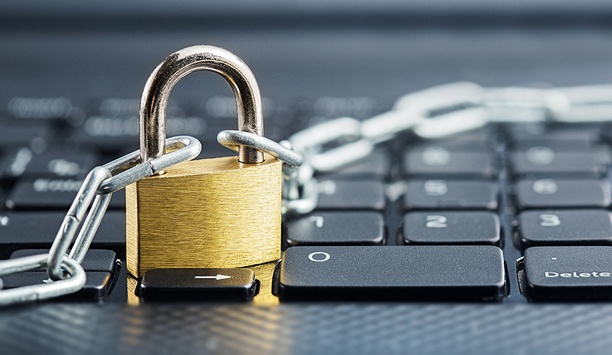
Making your surveillance cyber secure
Download
Hikvision DarkFighter Technology for high-quality images at night
Download
Enhanced Ethernet Technology (ePoE)
Download

Videos
Network monitoring: Manufacturers & Suppliers
- exacqVision Network monitoring
- Dahua Technology Network monitoring
- Bosch Network monitoring
- Honeywell Security Network monitoring
- Axis Communications Network monitoring
- Hikvision Network monitoring
- Hanwha Vision Network monitoring
- Vicon Network monitoring
- AMAG Network monitoring
- eneo Network monitoring
- Video Storage Solutions Network monitoring
- LILIN Network monitoring
- Sony Network monitoring
- IDIS Network monitoring
- BCDVideo Network monitoring
- Eagle Eye Networks Network monitoring
- IndigoVision Network monitoring
- March Networks Network monitoring
- Messoa Network monitoring
- Surveon Network monitoring

Using artificial intelligence (AI) to automate physical security systems
Download
A modern guide to data loss prevention
Download
7 proven solutions for law enforcement key control and asset management
Download
The truth behind 9 mobile access myths
Download
Access control system planning phase 2
Download









